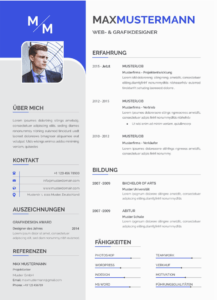Agricultural engineers are experts in the applied science of putting food on the table. And since they all need food themselves, they start with an excellent application as an agricultural engineer.
What does an agricultural engineer do?
Agricultural engineers oversee and oversee the design of equipment and machinery for agricultural processes. This means that they design, develop and evaluate the systems, equipment and facilities required for efficient agricultural production. They often direct and oversee the manufacturing of products, ensuring that the best practices and desired results are achieved.
Agricultural engineers strive to improve the functioning and productivity of machines or processes related to agricultural objectives. They can also advise farmers and businesses on land use and suggestions for more efficient agricultural productivity. Agricultural engineers may also work on construction projects and oversee land reclamation, drainage and irrigation. Your work may also include some aspects of environmental engineering.
.
How to Write an Application for Agricultural Engineers
An agricultural engineer resume should be only one page long and contain these five components:
This is how you get any job
– Header
- Professional background
- Education
- Skills
The header is the area at the top that contains your name, occupation, mailing address, phone number and email. You can also include your LinkedIn page or another website where you showcase your work. The header should not only contain your contact details, but also be well thought out and attractively designed and give a positive impression at first glance.
We'll go over what the other sections should contain below.
We will write your application and secure your new job!
Sit back and relax. Our team takes care of everything.
An agricultural engineering resume should demonstrate that your work experience gives you the ability to solve technical problems related to agricultural equipment and efficiency. In your cover letter, you should highlight your ability to apply engineering strategies and your excellent knowledge of life sciences. Don't just claim that you have these skills, describe how you've used them to innovate.
In this section, use your previous professional achievements to demonstrate your ability to identify agricultural problems and offer solutions. View each bullet point as an opportunity to describe a problem, explain the actions you took to solve the problem, and present the results of your actions. Simply listing your responsibilities does not tell hiring managers that you are a problem solver who can take responsibility.
If you're entering the job market for the first time, you'll want to lean more heavily on your education and internship or teaching experiences. List the design techniques you learned. As you write each point, be sure to use meaningful verbs and data to make your achievements more impressive.
List all positions that are relevant to agricultural engineering or positions that have transferable tasks and/or required skills for your job. See sample content below.
Example of a customizable resume
Agricultural Engineer at Frost Engineering Group
July 2016 – September 2019
- Collected and recorded data relevant to project objectives and ultimate agricultural productivity.
- Advising landowners and businesses on the needs of complex agricultural systems.
- Leveraged engineering strategies to solve problems and improve efficiency and safety.
- Successful completion of several structural modernizations and repairs.
- Worked to ensure budgets were met and customer satisfaction was achieved.
Agricultural Engineer at Halstead Engineers
September 2019 – June 2016
- Effective testing of a variety of mechanical and electrical systems on agricultural and construction machinery.
- Applied troubleshooting techniques as necessary.
- Documents and communicates test results.
- Worked independently and also alongside engineers.
Best format for an application in agricultural engineering
Most resumes use the reverse chronological resume format to list employment history. This means listing your current or most recent job first and your first job last. This is probably your best option if you can demonstrate continued employment in your field.
Another option is the functional resume format, in which previous jobs are listed by type of job and not by date. This can be useful if you have worked primarily as a contractor or freelancer, or if there are large gaps in your work history.
Education
Agricultural engineers must have a bachelor's degree or higher, preferably in agricultural engineering or bioengineering. If you have been working for several years, you can keep this section short and only list your degrees and certificates. However, if you are new to the field or career, you should list all relevant courses, awards, and your GPA if it is outstanding. If you have a master's degree or higher, you can skip your school.
Example of Skills Section
The Skills section is exactly what it sounds like, a listing of your skills, but don't underestimate its importance. Here you can choose from your many skills to show that you are a well-rounded professional.
The ideal agricultural engineering candidate will have more than just knowledge of life sciences. You must have strong analytical thinking skills and a deep understanding of agricultural processes, machines and equipment. These are the job-specific skills required to perform your job. But employers also want to know that you have communication skills and organizational talent, or soft skills. Be as specific as possible. For example, when listing software, be specific about what software you know about. Make a list of all your skills and select half a dozen that best fit the job you're applying for. Design this list – and the rest of your resume – to make you the best possible candidate for the job. Think about what special or rare skills you possess and list them instead of the basic skills that most applicants have.
See sample content below.
- Critical thinking skills
- Engineering strategies
- Knowledge of biological science
- Extensive knowledge of agriculture
- Decision-making skills
- problem-solving skills
Design and format
The most important thing to remember when choosing your resume design is that hiring managers have tired eyes. You'll see hundreds of resumes for each position and, most importantly, you need to be able to quickly search for relevant information. This means that within a minute they want to find your contact information, your current and previous position and company, and perhaps your skills.
To make this possible, you need a clean, easy-to-read layout with clear headings and plenty of white space.
Your resume design is the first visual impression you make on a hiring manager. We offer you professional premium layouts with our application service.
The cover letter for the agricultural engineer
The cover letter is of course the most important part of the application. Here you can explain your motivation, your professional experience and your greatest successes. To ensure that this works perfectly, we would be happy to help you write the perfect cover letter. A cover letter that is too boring is an absolute no-go!
Conclusion
- Start with a visually appealing header that contains all of your contact information.
- Write a profile that highlights your greatest strengths, including your work experience and special skills.
- When listing previous jobs, you should include bullet points about what you accomplished at those jobs.
- Unless you are just finishing school and have little work experience, keep the education section brief.
- Make a list of hard and soft skills that the employer you are targeting is logically looking for.

As managing director of gekonntbewerben.de since 2017, I can look back on a remarkable career in the area of human resources and applications. My passion for these topics manifested itself early on and I consistently focused on expanding my knowledge and skills in this area.
I was particularly fascinated by the importance of applications as a central element of HR work. I realized that applications are much more than just a means to an end to fill an open position. A professional application can make all the difference and give the applicant the decisive advantage over competitors.
At gekonntbewerben.de we have set ourselves the goal of creating professional applications that optimally showcase the applicants' individual strengths and experiences.
I am proud to be part of this successful company and look forward to continuing to help our customers realize their career dreams.





![2 tips for applying as a gardener without experience [2023] Applying as a gardener without experience](https://gekonntbewerben.de/wp-content/uploads/2021/04/justin-buisson-5y2k1XEqRZY-unsplash-1-150x150.jpg)



![Applying as an administrative assistant - 6 essential tips [2023] Application as an administrative assistant](https://gekonntbewerben.de/wp-content/uploads/2021/03/jeshoots-com-LtNvQHdKkmw-unsplash-2-150x150.jpg)



